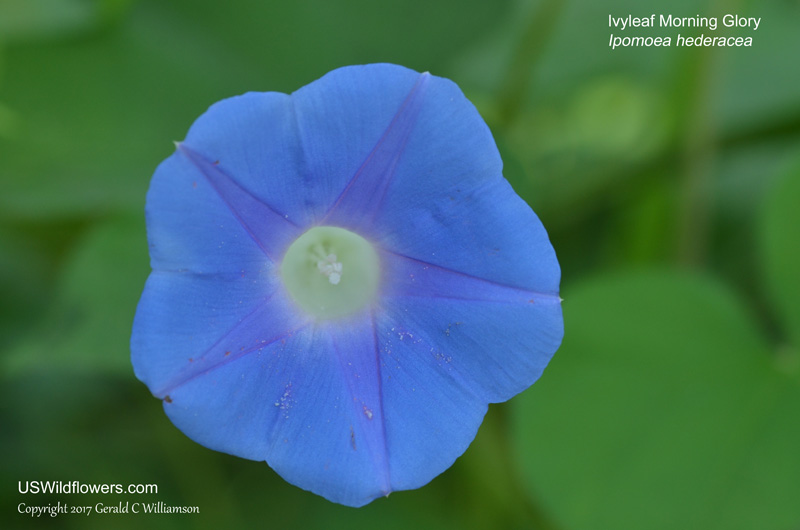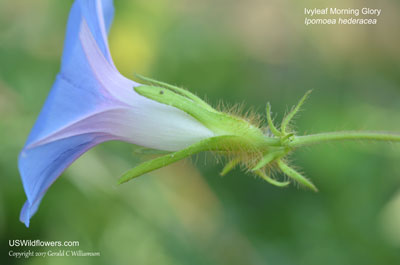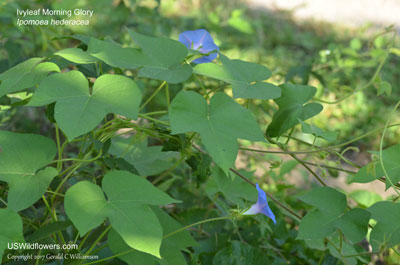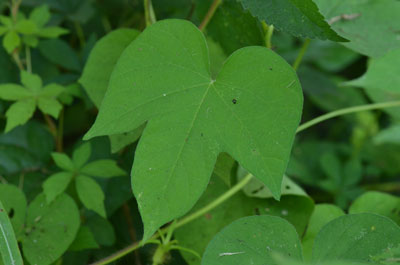Wildflowers of the United States | |||||||||||||
| |||||||||||||
Ipomoea hederacea - Ivyleaf Morning Glory, Entireleaf Morningglory, Small Morning Glory. | Ipomoea is a large genus of well over 600 species worldwide, with over 60 in the United States. The Morning Glory name is applied to plants in the genus because these flowers, which can be especially glorious when large numbers are blooming, will close up or wither later in the day as the bright sun shines on them. There is an Ipomoea species found in every state except for Idaho and Alaska (but those two states have the very similar Calystegia or Convolvulus genera present.) Whether or not Ipomoea hederacea is native to the United States is debated. Recent DNA studies did not resolve the debate, although patterns seem to imply that it has at least partially obtained its current distribution as agricultural activities spread, although some of that might have occurred prior to the beginning of historical botanical records in North America. It was recorded as being in eastern North America in 1805 by Michaux. While most of those who (like me) simply parrot what others are saying indicate that its origin is Central or South America, some authorities say that Ipomoea hederacea might have originated in the southeastern United States. (Since the majority seem to consider it non-native to the U.S., I have it thus listed here.) It is considered weedy in much of its range, covering the entire eastern United States except for Vermont and Rhode Island, and west to North Dakota down to Texas. It is also found in New Mexico, Arizona, and possibly California (The California report may be Ipomoea nil. (BONAP reports it in Vermont, and shows it as native to California.) Found in: AL, AR, AZ, CT, DC, DE, FL, GA, IA, IL, IN, KS, KY, LA, MA, MD, ME, MI, MN, MO, MS, NC, ND, NE, NH, NJ, NM, NY, OH, OK, PA, SC, SD, TN, TX, VA, WI, WV  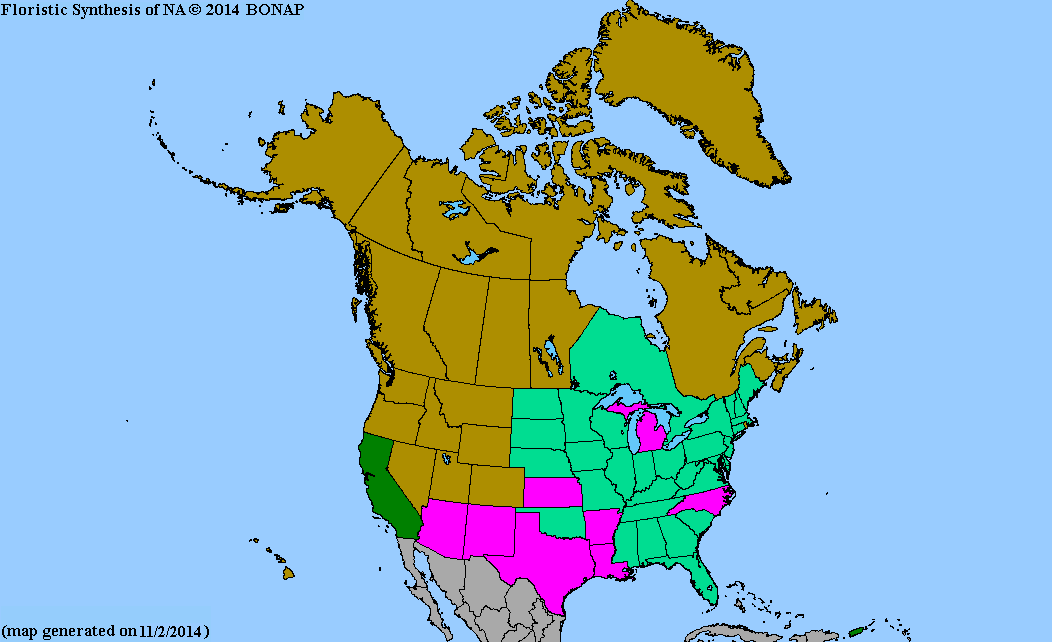 Map courtesy of The Biota of North America Program. Map color key Search Our Database: Enter any portion of the Scientific, Common Name, or both. Do a general Google search of the entire site: #ad
| #ad
| | ||||||||||
|
Commercial / Cookie Notice Looking for Wildflowers for a specific state? Check here: | |||||||||||||
|
All content except USDA Plants Database map Copyright Gerald C. Williamson 2025 | |||||||||||||
Code Update 20230302

